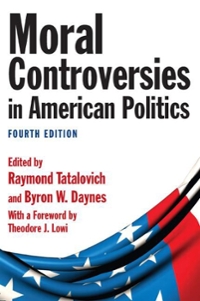Question
Thank you! Question: Please help me to explain the factors that cause changes (shifts) in AD define aggregate supply (AS) and explain how it differs
Thank you!
Question:
Please help me to
explainthe factors that cause changes (shifts) in AD
defineaggregate supply (AS) and explain how it differs in the immediate short run, the short run, and the long run
explainthe factors that cause changes (shifts) in AS
discusshow AD and AS determine an economy's equilibrium price level and level of real GDP
describehow the AD-AS model explains periods of demand-pull inflation, cost-push inflation, and recession
Follow the instructions below.
Instructions:
The economic ideas of two the most influential economists:John Maynard Keynes and Frederic von Hayek have a significant impact on the US economy and the entire global economy. They had very different views about a free market economy and the role of the government.Even though they had arguments in 1930s, their ideas still affect our contemporary economic systems.
The relevance of their views will be debated in the video:Fear The Boom and Bust": Keynes vs Hayek Rap Battle. Two models below represent John Maynard Keynes and Frederic von Hayek concepts of aggregate-demand (AD) and aggregate-supply(AS) of the nation's economy. Once you've watched the video and read Chapter 32: Aggregate Demand and Aggregate Supply, then answer the questions that follow.
The following links provides a two-minute videos about demand-pull inflation, cost-push inflation, recession, short-run period, and long-run period.
Investopedia. (n.d.).Cost push inflation. Retrieved from https://www.investopedia.com/terms/c/costpushinflation.asp
Investopedia. (n.d.).Demand-pull inflation. Retrieved from https://www.investopedia.com/terms/d/demandpullinflation.asp
Investopedia. (n.d.).Recession. Retrieved from https://www.investopedia.com/terms/r/recession.asp
Investopedia. (n.d.).Short run.Retrieved from https://www.investopedia.com/terms/s/shortrun.asp
For more information about Keynes's and Hayek's different views, read the article: Keynes v Hayek: Two economic giants go head to head.
BBC News. (2011, Aug 3).Keynes v. Hayek: Two economic giants go head to head.Retrieved from http://www.bbc.com/news/business-14366054
Welker, J. (2011, Apr 8).The battle of ideas: Hayek versus Keynes on Aggregate Supply.Retrieved from http://welkerswikinomics.com/blog/2011/04/08/1643/
Figure 1: Hayek's (Classical) AD-AS Model
Economics Online. (n.d.).Aggregate Demand. Retrieved from http://economicsonline.co.uk/Managing_the_economy/Aggregate_demand.html
1.1. Why does Hayek's aggregate supply curve always lead to an equilibrium level of national output equal to the full-employment level of real GDP?
1.2. Hayek says that markets will heal themselves and that government should not intervene. How does the AD-AS model reflect Hayek's idea that governments cannot increase real GDP beyond the level that the free market economy is able to produce?
1.3. Do you believe that the Hayek's classical AD-AS model explain the factors that cause changes (shifts) in AS realistically? Why or why not?
Figure 2: Keynes's AD-AS Model
Economics Online. (n.d.).Aggregate supply. Retrieved from http://www.economicsonline.co.uk/Managing_the_economy/Aggregate+supply.html
2.1. Changes in which factors could cause aggregate demand to shift from AD to AD1? What could happen to the unemployment rate? What could happen to the inflation rate?
2.2. The Keynesian AD-AS model describes what happens with price levels when aggregate demand increases. Could you find any evidence from the last ten-fifteen years that might support AD-AS model descriptions of demand-pull inflation, cost-push inflation, and recession? For example, you could find data on the GDP's of any two countries from 2000 to 2017 to support your findings.
2.3. In macroeconomics, the immediate short run is known as a length of time when both input prices and output prices are fixed. In the short-run, input prices are fixed but output prices are variable. In the long run, input prices and output prices can vary.
What happens in the immediate short-run when AD rises from AD to AD2 to the price level and output?
What happens in the short-run when AD falls from AD to AD1 to the price level and output?
What will happen in each case in the long-run?
Step by Step Solution
There are 3 Steps involved in it
Step: 1

Get Instant Access to Expert-Tailored Solutions
See step-by-step solutions with expert insights and AI powered tools for academic success
Step: 2

Step: 3

Ace Your Homework with AI
Get the answers you need in no time with our AI-driven, step-by-step assistance
Get Started


